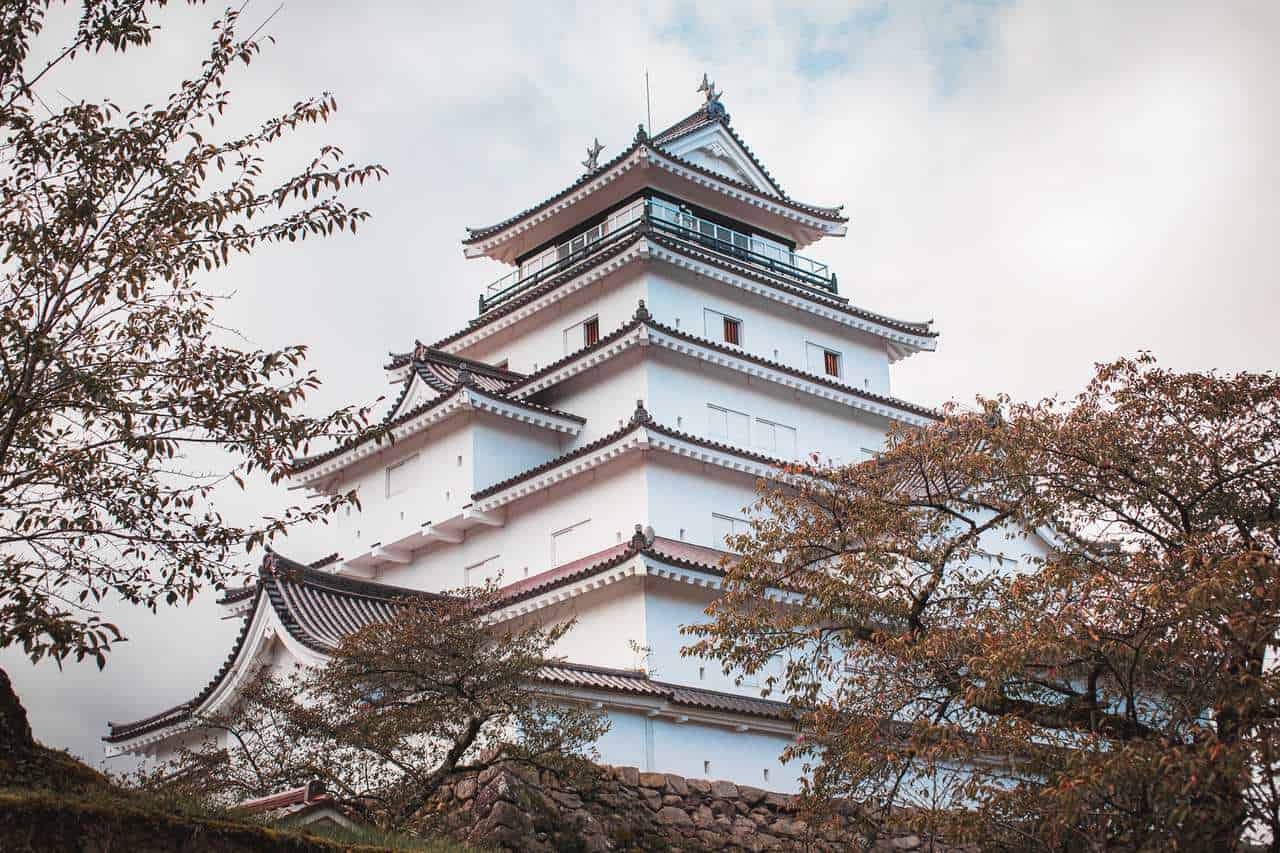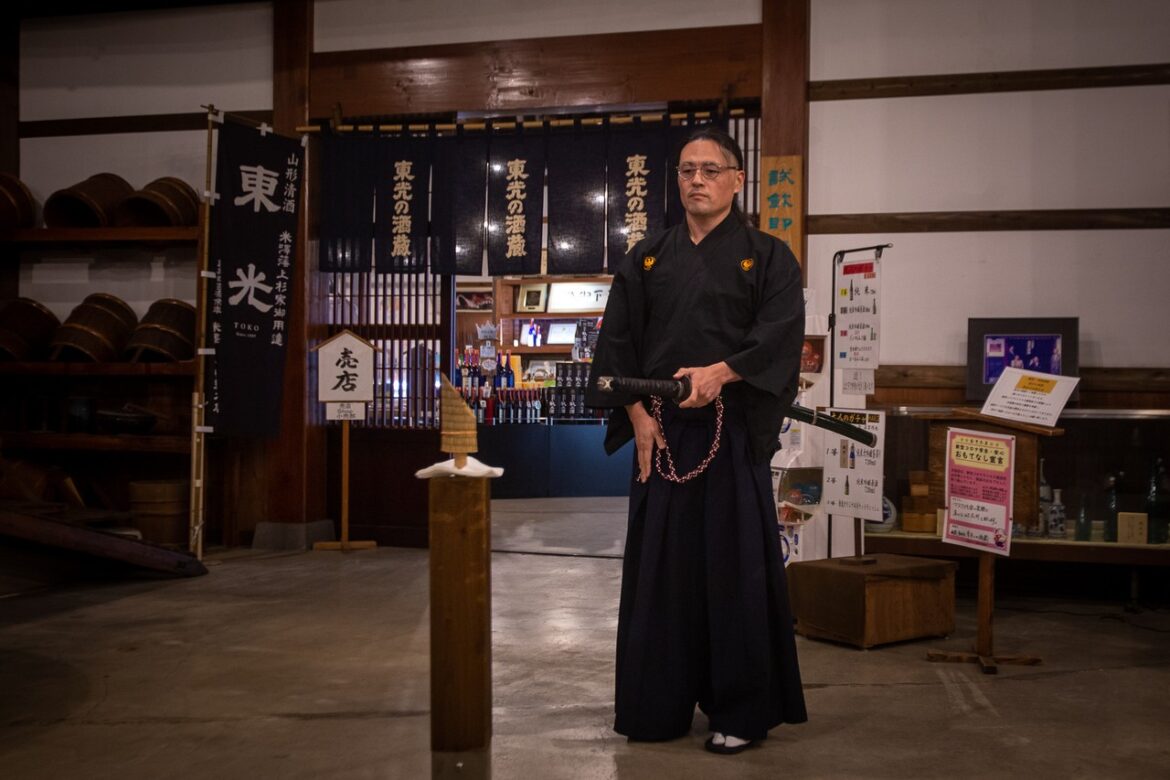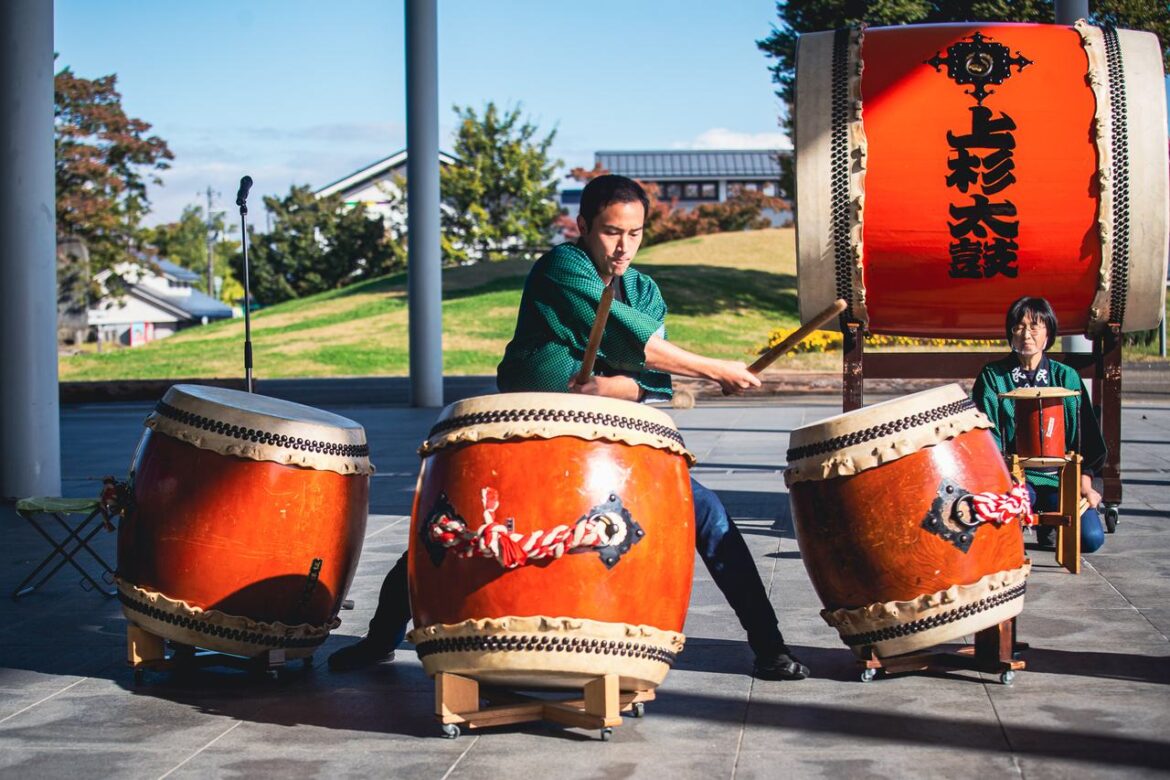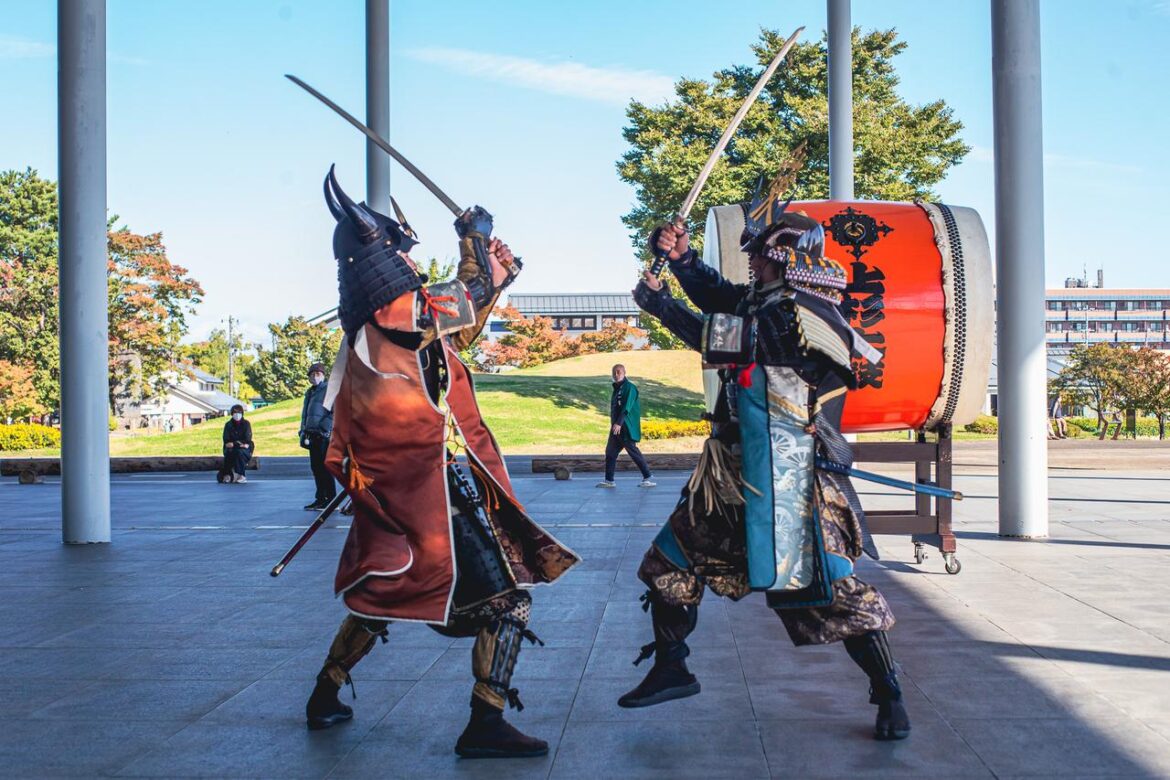Explore Samurai culture, learn about Sake and the magnificent shrines.
The often-overlooked Fukushima and Yamagata prefectures are located in the Tōhoku region of Japan and are both rich in culture and landscape.
The joys of Fukushima are still obscured behind a cloud of a nuclear accident following the 2011 great east Japan earthquake. That’s a shame because Japan’s third-largest prefecture offers incredible natural beauty, warm hospitality, and fascinating historical sights a decade later.
Yamagata is more pleasantly famed as being Japan’s largest producer of cherries and pears. It is also known for its gorgeous spring cherry blossoms, the Kajo Park containing the remains of Yamagata Castle and its natural beauty.
Getting there from Tokyo is easy as it is just an 80-minute train ride on the Tohoku Shinkansen to Southern Fukushima. From there, you can pick up a rental car and meander through the mountains of the Aizu region, making your way through Fukushima and Yamagata stopping off at these historical destinations.
Check them out here.
Ouchi-juku (大内宿), Fukushima
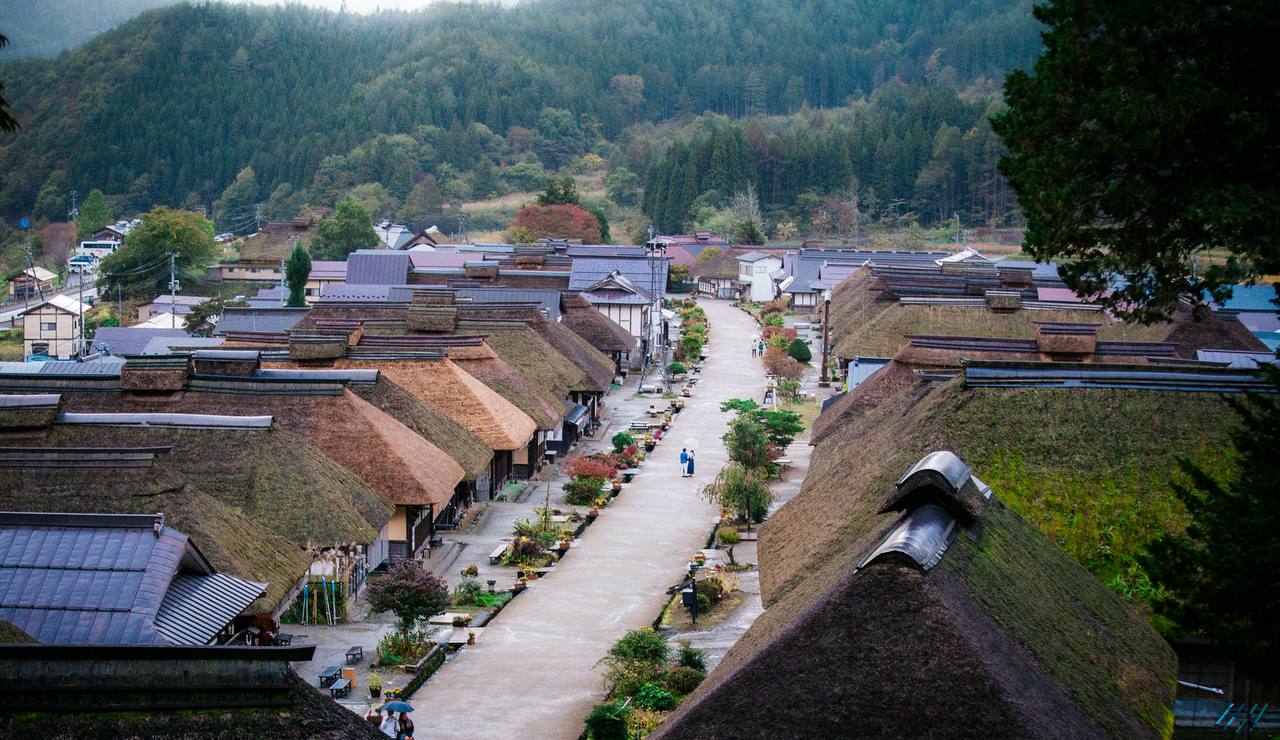
The remote mountain village of Ouchi-juku is probably one of the most interesting historical spots of Fukushima. During the Edo period, the shogun made every feudal lord in Japan travel to Edo (now known as Tokyo) and live there every other year to control them. As a result, shukuba or postal towns were created along the roads to Edo, serving as rest stops for the lords, merchants and travellers. Ouchi-juku is one of Japan’s best-preserved examples of a shukuba.
The main street is lined with preserved houses whose thatched roofs recall the more famous Shirakawa-go in Hida, but without the touristy crowds. Locals still live in them, using the ground floors as shopfronts to sell souvenir crafts, local dishes and sake. A handful also offers overnight accommodation.
TIP: Try the local speciality – Negi Soba. This buckwheat noodle dish is eaten using a leek instead of chopsticks. The leek can be eaten too.
More info about Ouchi-Juku: click here
Tsurugajo Castle, Fukushima
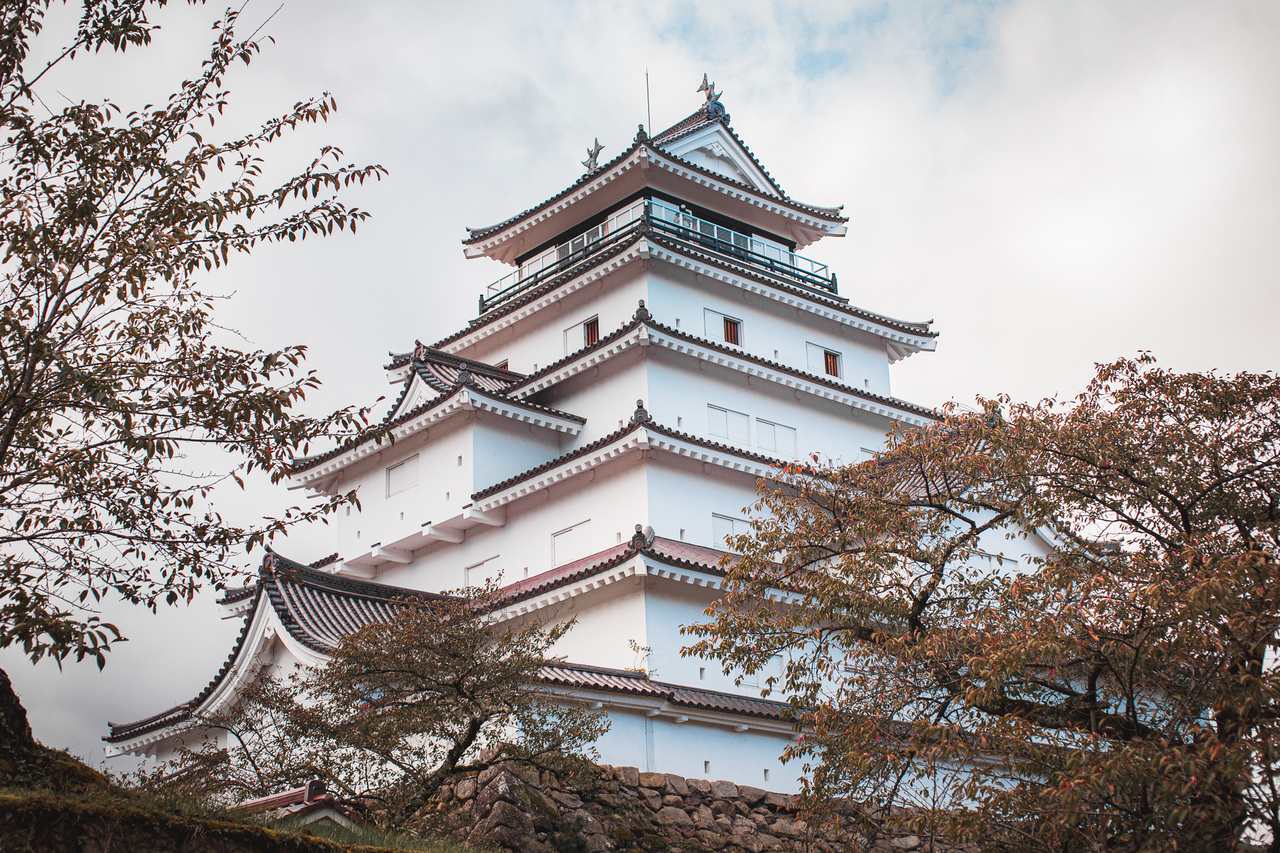
Tsurugajo Castle is a throwback to the 14th century Aizu Wakamatsu City – a city that thrived for 1000 years with a deeply embedded samurai culture.
The castle you see today is a faithful restoration from the iconic white central tower down to the unique iron red-tinted roof tiles. But there is still enough of the original construction so that you can spot the building styles, from the medieval nozura-zumi of piled stones to the Edo-period uchikomi-hagi method of cutting stones to form flat surfaces.
A trip up to the watchtower observatory gives rewarding views of the surrounding neighbourhood and green mountains on the horizon. Inside, the exhibition includes reproductions of many paintings and woodcuts depicting key characters and moments in the history of samurai culture.
More info on Tsurugajo Castle: click here
Okawaso (大川荘), Fukushima
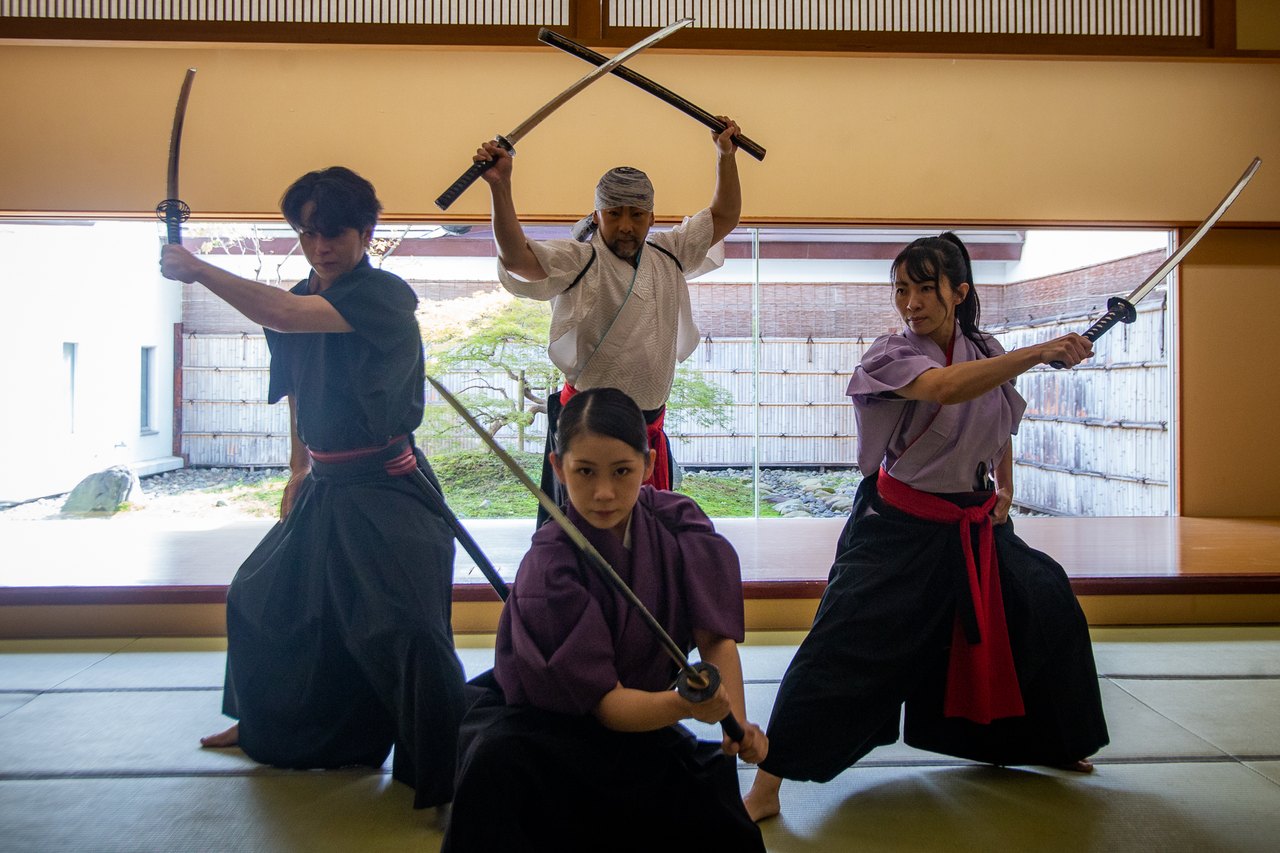
Okawaso is a luxurious onsen resort hotel nestled in the lush hot spring valley of Aizu along the beautiful valley of Okawa River. The majestic lobby has wooden tables, lattices, balconies, stairs and running water-centred around an intimate square stage. Service by the kimono-clad female attendants, called nakai-san, is attentive.
One of the highlights is a daily live performance on the shamisen (a Japanese three-stringed instrument).
If you join the special tour, you will have a chance to watch a live samurai sword performance of “Kengishu Kamui” set in front of a landscaped private garden. The spectacular show is an entertaining display of both traditional kenjutsu swordsmanship and samurai values.
Lunch is an exquisite multi-course meal featuring fresh seafood, sukiyaki beef, and dainty desserts.
More info about Okawaso: click here
Toko Sake Museum, Tohoku
Kojima Sohonten sake brewery in Yonezawa has been brewing Toko sake rice wine has been since 1597 by the same family. The current chairman, Kojima Yazaemon, is the 23rd descendant of the brewery’s founder.
From 1603 until the end of the Edo period, Kojima Sakaya was the chief brewer of sake for the ruling samurai Uesugi clan. They must have been pleased with the sake.
The Toko Sake Museum was opened in 1984 and housed in a restored Meiji-period kura brewery. It contains giant wooden fermentation vats, a large cedar tank used to steam the rice, reconstructed chambers and historical artefacts such as a 400-year-old Bizen pottery vessel used for sake brewing. And, of course, you get to sample Toko sake.
If you join the Samurai Train Tour, you can see a dramatic iaido (居合道) demonstration at the museum, during which a swordmaster slashed through vertical rolls of wet tatami mats as substitutes for human bodies in weight and density. Nevertheless, iaido’s ultimate goal, according to the master, is to become so inherently dominant that you avoid any fight in the first place. ”
More info on Samurai Train Tour: click here
More info on Toko Sake Museum: click here
Nisshinkan (日新館), Fukushima
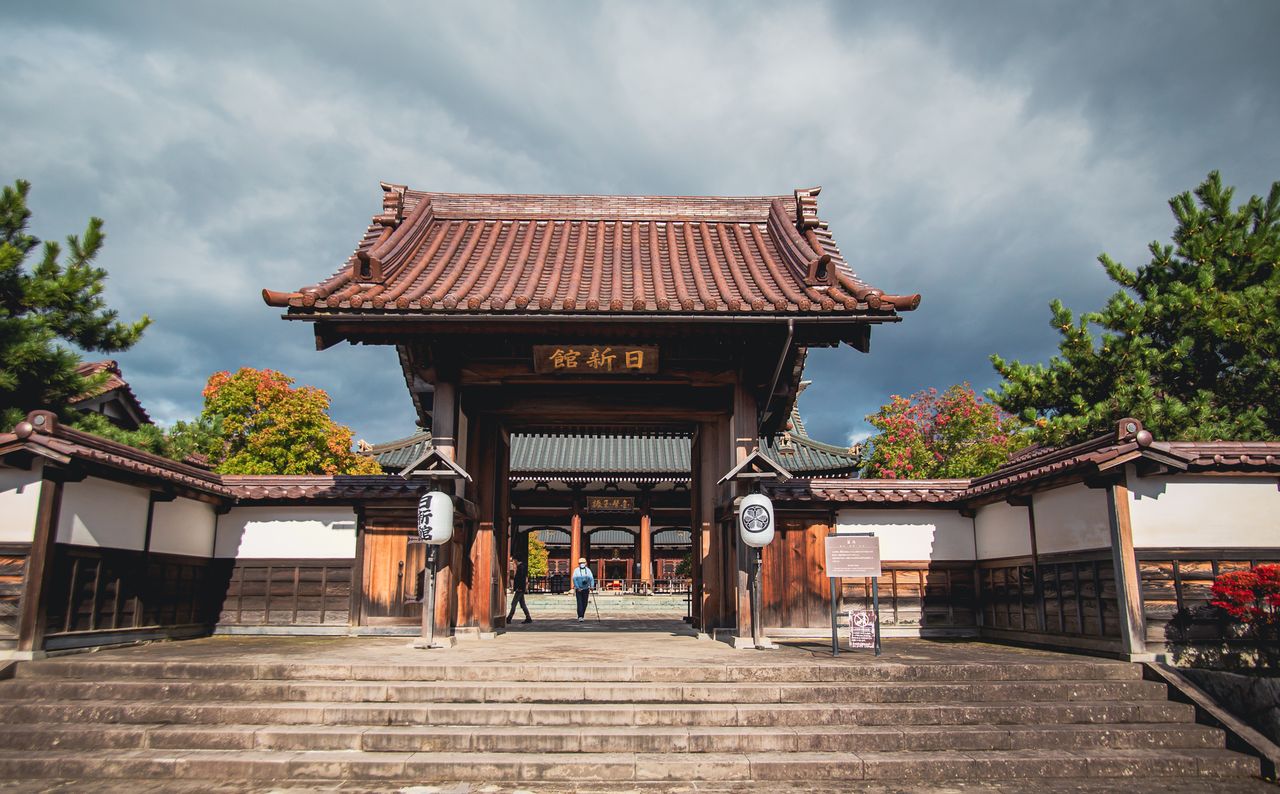
Founded in 1803 by the Aizu domain, Nisshinkan was created during the Edo period to educate the sons of high ranking samurai officials who entered the school at 10 years old. It was one of the most prominent samurai schools in the country. At Nisshinkan, the boys learned not only academics but also the spirit, behaviour, and manners of samurai.
Nisshinkan’s history is laced with the tragedy of the famously devoted Byakkotai troop of 19 teenaged boys. When the Byakkotai, composed of boys aged 16 to 17, retreated from the battlefield through theTakizawa Pass and the cave of the Tonoguchi, and reached Mt. Iimori, the boys saw the castle tower of Tsurugajo Castle covered in smoke. They decided to die like a samurai rather than being caught and humiliated by the enemy and killed themselves with their own sword.
In the battle of 1868 that signified the end of the Samurai era, the school’s buildings were burnt down. Today the school has been restored, you can visit the halls, and the swimming pool, which is said to be the oldest in Japan, and even try your hand at the archery range with real wooden arrows and a real bow.
More info about Nisshinkan: click here
Denkoku no Mori (伝国の杜), Yamagata
Denkoku no Mori in Yonezawa, Yamagata, is situated adjacent to Matsugasaki Park, home of the Uesugi Shrine. The museum offers a fascinating display of artefacts of the Uesugi Clan that flourished as warriors.
Notable among the many artworks is the Uesugi Rakuchu Rakugai Zubyobu (Folding Screen), considered a national treasure. Take a close look for an overview of life, complete with fauna and flora, of the 2,500 people depicted on the screen some 450 years ago. It was a gift from the famous samurai warrior Oda Nobunaga to the warlord Uesugi Kenshin.
The museum’s outdoor plaza often hosts local festivals, taiko performances and special appearances by the Yamagata Ai Samurai Troupe (recognisable by the “ai” kanji decorating the helmet famously worn by the literary and wise samurai Naoe Kanetsugu).
More info about Denkoko no Mori: click here
Uesugi Shrine (上杉神社), Yamagata
The Uesugi Shrine, located on Yonezawa’s Matsugasaki castle ruins inside the park, was built to honour one of Japan’s most coveted warriors, Uesugi Kenshin, who became a chief general at the tender age of 16 years old. He is regarded as the most powerful warlord of the Warring States period.
It is also a popular place to see the cherry blossom, which looks magnificent in the spring.
Elsewhere on the grounds is the Matsumisaki Shrine, devoted to Uesugi Yozan, who became the feudal lord of Yonezawa at the age of 17 and reformed the Yonezawa domain through political innovation economically. The shrine has special meaning for Yonezawa for the locals and you will often see couples posing for wedding photographs, children wearing kimono for ceremonies, or locals simply out for a walk with their dressed-up dogs.
More info on Uesugi Shrine: click here
Uesugi Joshien “Abcys” (上杉城史苑 アビシス)
This restaurant, just around the corner from Denkoku no Mori and Matsugasaki Park, not far from Yonezawa train station, is a convenient place to enjoy traditional Japanese cuisine in a dining room flooded with natural light.
Try the Yonezawa beef, considered to be one of Japan’s top three beef brands. If you enjoy it then explore the shops of Uesugi Joshien and buy a slab or Yonezawa beef for later. Other must-buys are local cherries or a bottle of locally produced pear and grape juice for which the region is so famous.
More info on Uesugi Joshien “Abcys”: click here

